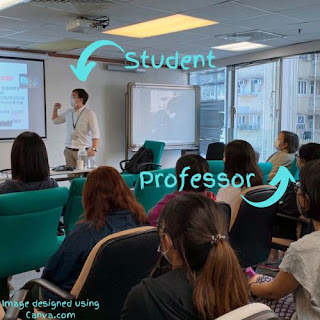Turn Your Teaching into Publications #1: Classroom-based Research is ~70% More Efficient
A big issue I see with faculty who have trouble at the tenure/promotion stage (or with the transition from Non-TT to TT) is that they don't have an established research agenda. Most of the faculty at my school are teaching a bunch of classes already, and they don't have any extra time to devote to overseeing a research lab. My advice to them is to turn their classroom into a laboratory by conducting classroom-based research.
In this entry, I compare the time savings between a non-classroom-research project and a classroom-based research project. By my napkin-based estimates, the time savings on the high end could be close to 70%. (Skip to bottom for Table breakdown.)
Starting a Research Project from Scratch: 12-25 months
Choosing an Original Topic: 6 Months
When I start a new research project, it usually takes me around six months to settle on a topic I’m interested in. I might think I’m interested in, say, depression, but after a month I realize it’s anxiety that really interests me. Then a few months later I realize it’s the conflicting theories of emotional regulation that got me started down that path. Etc. If I jumped on every idea, then I would be submitting ethical review applications every other week and never get around to finishing any of them. If, however, I have a topic that has intrigued me for a full six months, then I know that I can begin working on it in earnest.
Reviewing the Literature: 1 Month
Part of my topic selection includes reading everything I can get my hands on, which means that I already have around six months of reading at this point.
Now it’s time to start writing. For me, the purpose of writing the review is part getting a handle on my understanding of the topic, and part communicating the importance of the project to the public. I typically do this sort of work over holiday breaks and can pump out 10,000 words in a week or so. If it’s during an academic term, then this occurs during the odd available hour. So we’ll call it one month.
Institutional Review Board: 1 to 3 Months
If I’m collecting data for my study, I schedule between one and three months to get through the institutional review board process. This requires the writing I’ve already done along with my research design, instruments, and procedure. Once finished, I can collect data.
Pilot Testing: 1 to 3 Months
I generally conduct qualitative research, which has me interviewing participants. My participants invariably show me that I’ve misunderstood some essential part of my topic, so I give myself some time to pilot my interview questions in order to see if I’ve understood my questions well enough. Sometimes I will have to go back and reread literature and rewrite my review to update what I’ve learned.
Data Collection and Analysis: 3 to 12 Months
Depending on the sort of study I’m doing and how many participants I need, the data collection and analysis can take anywhere between three and 12 months. (I think I would be too impatient and at an attention deficit if a study took any longer than 12 months.)
Final Manuscript Preparation and Submission: 1 to 3 Months
I like to write up my results and then let the manuscript sit for a few weeks. Then I read through it for narrative cohesion and write a discussion and conclusion. I let it sit again before reading through it again for narrative cohesion. I repeat this process until I think I’ve got it, then go through it with a fine-tooth comb getting citations, references, word choice, and all that sorted out. This prevents me from overburdening peer reviewers once I’ve submitted it to a journal. I usually plan on spending an entire week preparing the manuscript for a specific journal (with an eye on the article preparation checklist).
Sum Total:13-28 Months
It would take me between 13 and 28 months to complete a study on a topic that is separate from teaching. That might seem like a lot of variance, but it’s about right in my experience. The exact length would depend on how quickly and easily it came together. It also takes longer if I’m busy or if I’m mentoring a student or colleague through the process.
Keep in mind that I’ve done this process a dozen times already, and I’m rather manic about it when I do so. I expect the average length of time for professors more generally would be 50-100% longer.
Now let’s take a look at what happens when I choose as my topic something from the teaching side of my job.
Teaching-based Action Research Project: 5-9 Months
Choosing an Action Research Topic: 1 Week
If you are a conscientious teacher—by which I mean you pay attention to what does and doesn’t seem to be working in the classroom—then you probably already have a decent idea of what to try, what to test, or what problems you’d like to solve. This perspective is part of being a teacher. Even if you’ve never given any thought to what you’re doing in the classroom, you’re still following a procedure or strategy. You can begin by testing whether the procedure you’ve established is working.
I give this step one week, because you would benefit from sitting down and brainstorming the various instructional, motivational, and procedural decisions you make and then deciding which one to evaluate in detail. You may choose to assess the effectiveness of a lecturing style, for example. But then a few days later you want to have the option of realizing that what really interests you is the textbook you’ve been using. Either way, this step shouldn’t take much more than one week.
Reviewing the Literature: 1 Month
This step will take just about as long as it does for an original study. The upside to doing action classroom research is that your topic will already be something that you are uniquely qualified to study, since you are what’s called a clinical expert: you have hand-on experience doing precisely what you’ll be studying. You don’t need a PhD in instructional technology to test the effectiveness of a hybrid classroom format you’ve developed, because you’ve developed and field-tested it already. You have experience the instructional technologist does not.
You’ll spend this month describing the problem, clarifying the instructional strategy, and/or articulating the theoretical foundations of the topic you’ve chosen.
Institutional Review Board: 1 Month
Unless you plan on conducting an experiment, there is little worry that you will get anything more than a expedited ethical review.
Pilot Testing: None
Chances are you have already conducted your pilot tests in the classroom, so there’s no need to do any more.
Data Collection and Analysis: 2-4 Months
Data collection will only take as long as your intervention will last—which is probably at least half of a semester (2 months) or the full semester (four months). The good news is that it can all be done simulteneously with your ordinary teaching and grading.
Final Manuscript Preparation and Submission: 1 to 3 Months
This will take the same amount of time as the original research condition.
Overall Time Commitment: 5-9 Months and One Week
By my calculations, classroom-based action research will only take about 1-5 more months than the length of an ordinary semester, and that’s only if it’s your first time doing it or you’re targeting a competitive journal for publication.
The action research path is as high as 70% quicker than the non-classroom research route. Do keep in mind, however, that this timeline is just for submission of the manuscript for review. Depending on the journal and the quality of your writing, it could take another 1-24 months before you get to see your article in print!
Table 1. Comparison of Timelines for Doing Classroom Research and Nonclassroom Research
Nonclassroom Research (in Months) | Classroom Research (in Months) | |
Topic Selection | 6 | .25 |
Literature Review | 1 | 1 |
IRB | 1-3 | 1 |
Pilot Testing | 1-3 | 0 |
Data Collection and Analysis | 3-12 | 2-4 |
Final Manuscript Preparation and Submission | 1-3 | 1-3 |
Total | 13-28 | 5.25-9.25 |



Comments
Post a Comment